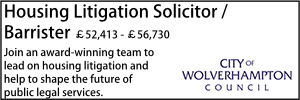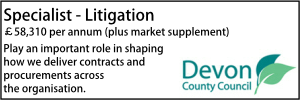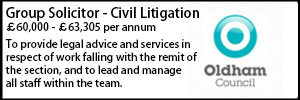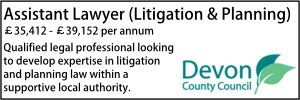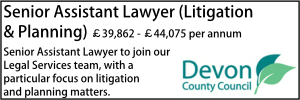Determining the suitability of applicants and licence holders for taxi and private hire licensing
- Details
The Institute of Licensing is consulting on its draft revised guidance on determining the suitability of applicants and licensees in the taxi and private hire industry. Read about the rationale for the changes, and how to take part in the consultation.
The Institute of Licensing (IoL) invites views from all interested parties on its draft revised guidance: ‘Suitability Guidance: Guidance on determining the suitability of applicants and licensees in the taxi and private hire industry’.
The Guidance is intended to assist local licensing authorities in considering their own local licensing policies on determining the suitability of applicants and licence holders for taxi and private hire licensing.
The original guidance was published in April 2018, which was closely mirrored in the annex at section 10 of the DfT's Statutory taxi and private hire vehicle standards, published in 2020. The review has been conducted by the IoL’s Suitability Guidance Working Group (the Suitability Group), which comprises:
- Stephen Turner, Solicitor at Hull City Council (Working Group Chair)
- James Button, James Button & Co Solicitors
- Yvonne Lewis, Licensing Manager, City & County of Swansea
- Linda Cannon, former Licensing Manager, Basingstoke Council
- Phil Bates, Licensing Manager, Southampton City Council
- John Miley, former Licensing Manager (Broxtowe Borough Council) and National Chair for NALEO
- Professor James Treadwell, Professor of Criminology, Staffordshire University
- Sue Nelson, IoL Executive Officer
- Ellie Birch, IoL Executive Assistant
The group undertook an initial consultation exercise in September 2022, and received 114 responses as a result, all of which have been reviewed and considered by the Suitability Group in preparing this revised version.
Chapter 1: Introduction is an introduction to the Suitability Guidance. It refers to the importance of the licensing regime in protecting public safety, and sets out the legislative position that a licensing authority must be satisfied that an applicant is a fit and proper person to hold a licence.
The purpose of the Suitability Guidance is to provide guidance to licensing authorities in determining suitability, and it can be used by licensing authorities as a basis for their own policies. It does not, however, alleviate the need for licensing authorities to adopt their own policies, which they should have regard to when making licensing determinations.
Chapter 1 refers to policies having a 'bright line approach' and explains the position in this regard. Policies may contain bright lines but can never fetter discretion when making an individual determination, and licensing authorities can depart from their own policies where they consider there are exceptional circumstances which warrant the departure.
Finally, Chapter 1 sets out some of the approaches taken in later chapters of the Suitability Guidance, which will be looked at in turn.
Chapter 2: Offenders, Offending, Re-offending and Risk of Harm - An Overview, has been extensively reviewed. It looks at patterns of behaviour for offenders, and aims to assist licensing authorities in considering previous convictions and non-conviction information (complaints etc) alongside time factors (time elapsed), trends and the nature of behaviours in order to make a reasoned judgement of suitability in the face of matters of potential concern.
This chapter looks in detail at sexual offences, which are naturally of key concern when considering an individual's suitability to hold a licence. It underlines the role of licensing as a form of safeguarding and risk management of activities where licence holders have a great deal of opportunity and trust in situations with potentially vulnerable passengers on a daily basis.
Chapter 3: 'Taxi' Licensing Overview provides an overview of taxi and private hire licensing law, including the legislative framework, and the principal objectives of the licensing regime (to protect the public).
The chapter looks at the licence types under the regime, and considers the application and decision-making processes and key considerations in each case, including the legal thresholds which apply (for example the need for the local authority to be satisfied that an individual is 'fit and proper' before granting a licence). It emphasises the need for reasoned decisions and clear records of decisions to be maintained. There are references to relevant parts of the DfT's Statutory taxi and private hire standards and the system of recording refusals, suspensions and revocations on the NR3S database (mandated in England and wholly adopted in Wales).
Chapter 3 acknowledges that the vast majority of applicants and licence holders are decent, law-abiding people who work hard to provide a good service to their customers and the local community. They are an essential part of our communities, and many local residents rely heavily on them. The licensing regime when working correctly should exclude those who are not safe and suitable from the profession, protect licensees as a whole by increasing public confidence, and uphold the professionalism of the industry.
Chapter 4: Guidance on Determination has been subject to much discussion and review. The overriding principle of listing categories of offending rather than listing specific offences has been maintained. This is essential as consideration is not confined to conviction information - non-conviction information is relevant and must be considered alongside convictions. In addition, a list of specific offences would be too narrow, and superseded by new offences or arguments that a particular offence was ‘different’ to a listed one.
Some categories have been expanded. For example, 'exploitation' now includes 'criminal harassment', 'offences involving violence' includes fear of violence and 'sex and indecency offences' includes a reference to the 'Sex Offenders Register' and 'barred' lists.
Additional categories have been included: 'alcohol misuse or dependency', in addition to 'drugs misuse' (which now includes 'dependency'), and a further category of 'discrimination'. There is also a section on behaviours which looks at non-criminal behaviours which would be a potential cause for concern.
Motoring offences have been an area which has been subject to intense discussion. This was the main area of feedback on the original Guidance, in particular the reference to minor traffic or vehicle related offences. The 'motoring offences' section sets out the proposed guidelines in relation to motoring offences and the reasoning behind them.
Chapter 4 maintains the view set out in the original guidance, that the considerations under each category should be applied when considering applicants and licensees for driver, operator and vehicle proprietor licences.
The Consultation
The consultation will close on 30 September 2024, and all responses should be submitted via the online survey available here.
A print version of the survey can be downloaded here.
18-03-2026 1:00 pm
01-07-2026 11:00 am




